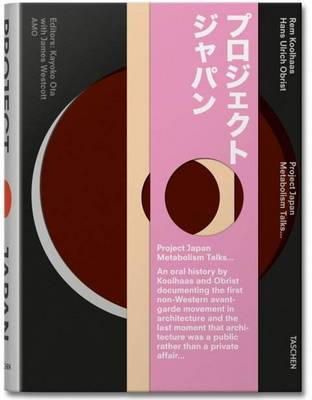23%OFF

Stock image for illustration purposes only - book cover, edition or condition may vary.
Project Japan
Hans Ulrich Obrist
€ 59.72
€ 46.25
FREE Delivery in Ireland
Description for Project Japan
Paperback. Through sheer hard work, discipline, and the integration of various forms of creativity, their country, Japan, became a shining example.. when the oil crisis initiated the end of the West, the architects of Japan spread out over the world to define the contours of a post-Western aesthetic. This title presents architecture for postwar Japan. Num Pages: 684 pages, Illustrations. BIC Classification: 1FPJ; AM. Category: (G) General (US: Trade). Dimension: 230 x 170 x 35. Weight in Grams: 1392.
“Once there was a nation that went to war, but after they conquered a continent their own country was destroyed by atom bombs... then the victors imposed democracy on the vanquished. For a group of apprentice architects, artists, and designers, led by a visionary, the dire situation of their country was not an obstacle but an inspiration to plan and think... although they were very different characters, the architects worked closely together to realize their dreams, staunchly supported by a super-creative bureaucracy and an activist state... after 15 years of incubation, they surprised the world with a new architecture—Metabolism—that proposed ... Read more
Show LessProduct Details
Publisher
Taschen GmbH Germany
Number of pages
684
Format
Paperback
Publication date
2011
Condition
New
Weight
1448g
Number of Pages
720
Place of Publication
Cologne, Germany
ISBN
9783836525084
SKU
V9783836525084
Shipping Time
Usually ships in 4 to 8 working days
Ref
99-8
About Hans Ulrich Obrist
Hans Ulrich Obrist is the Artistic Director of the Serpentine Galleries in London. Prior to this, he was Curator of the Musée d’Art Moderne de la Ville de Paris. Since his first exhibition World Soup (The Kitchen Show) in 1991, he has curated more than 300 shows and has published extensively on art, architecture, and culture. In 2011 Obrist received ... Read more
Reviews for Project Japan
"Project Japan features hundreds of fantastic never-before-seen images that tell the 20th Century history of Japan through its architecture."
Yellow Magazine
Yellow Magazine
